Grass is so outdated. Why cover your yard in plain old grass when you can spruce things up—and even help the pollinators—with a walkable ground cover?
Also called stepables (or steppables), walkable ground covers add color and texture to your yard while still being able to withstand foot traffic from humans and animals.
Plus, they’re much easier to maintain than a grassy lawn. You can say goodbye to mowing (most ground covers stop growing at a certain height) and tedious tasks like edging and weeding. The more fragrant varieties can even help deter insect pests and wildlife pests.
If you aren’t sure what ground covers are, in short they’re just plants that tend to grow wide rather than tall, thereby covering the ground more than other plants. This spreading and creeping growth habit means you won’t have to plant as many to fill the space.
Ground covers also make an excellent natural mulch that helps reduce erosion, conserve moisture, and crowd out weeds. Instead of using wood chips, pea gravel, or bark to fill in the empty spaces in your landscaping, you can plant low-maintenance, low-growing ground covers that add color and interest.
So, what plants are walkable? Keep reading to find my favorite walkable ground covers for your paths and walkways.
Disclosure: If you shop from my article or make a purchase through one of my links, I may receive commissions on some of the products I recommend.
Sedum
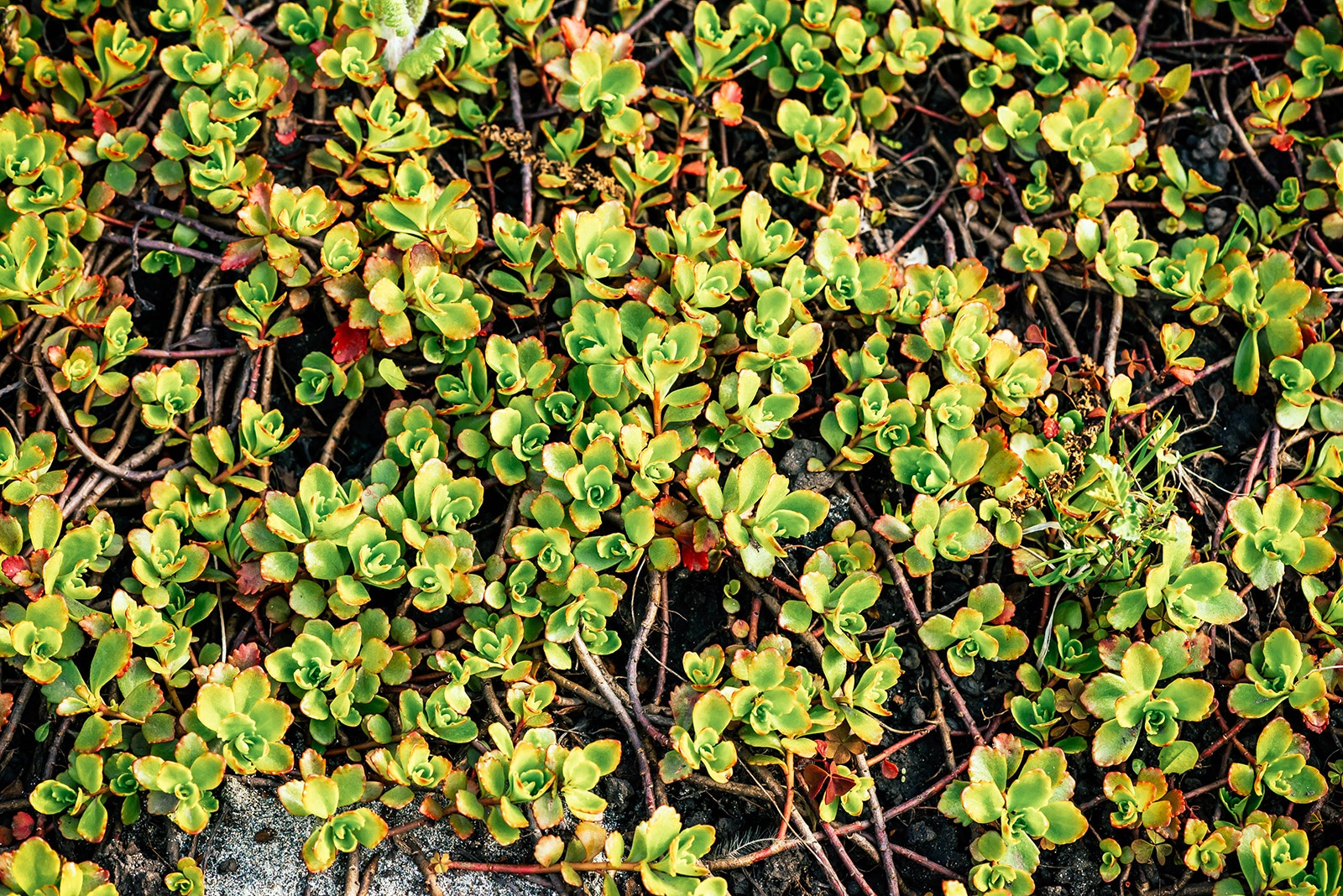
Sedum (Crassulaceae, also called stonecrop) is found primarily in the Northern Hemisphere, as well as in Africa and South America. It thrives in full sun and can withstand heat as well as drought, making it perfect for warmer climates and yards with direct sunlight all day.
More importantly, sedum is tough. It’s an evergreen ground cover that can handle being walked over (especially by boisterous dogs and kids) and doesn’t require a lot of maintenance.
The plants come in many different varieties featuring all shapes and sizes, and if you’re not going for a specific color scheme, I recommend a sedum mat like this one (which blends several types of stonecrops for a layered look).
Here’s where you can buy Lime Zinger, Red Carpet, Angelina, or Sedum Mat.
Recommended for: Zones 3 through 9
Corsican mint
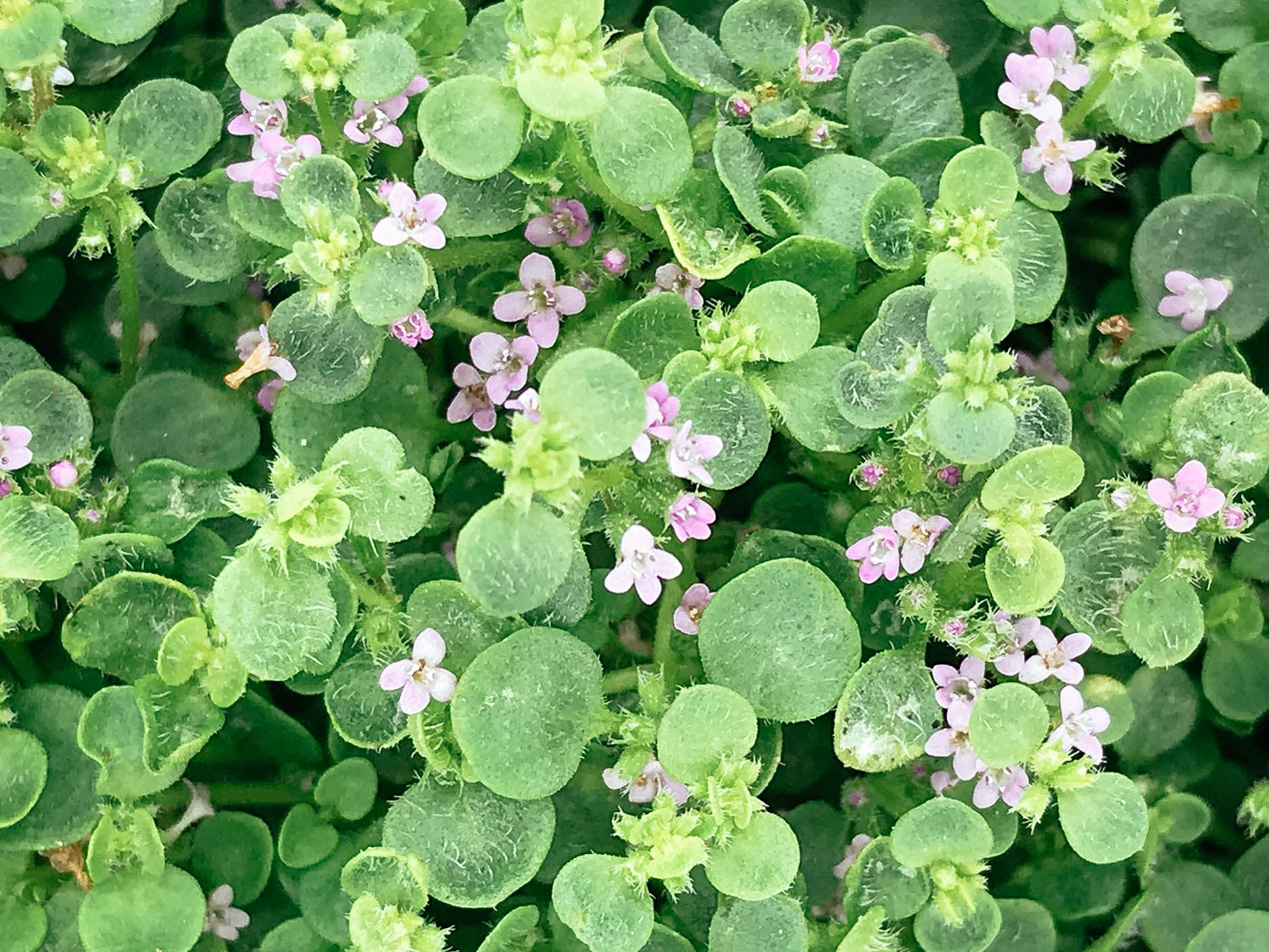
Native to Corsica, France, Italy, and Sardinia, Corsican mint (Mentha requienii) is a great low-growing ground cover. The plant is comfortable with sunlight and some occasional shade in peak summer. With every step you take on this deliciously fragrant ground cover, you’ll get a whiff of a lovely minty scent (which does double duty by repelling garden pests like deer, aphids, and cabbage moths).
When it flowers during the summer, it produces beautiful little lilac blooms that add a bit of color to all that green.
Corsican mint will struggle a little in a drought, so it’ll need moderate watering during these periods. But other than that, this walkable ground cover requires little other maintenance.
Here’s where you can buy Corsican Mint.
Recommended for: Zones 6 through 9
Silver carpet lamb’s ear
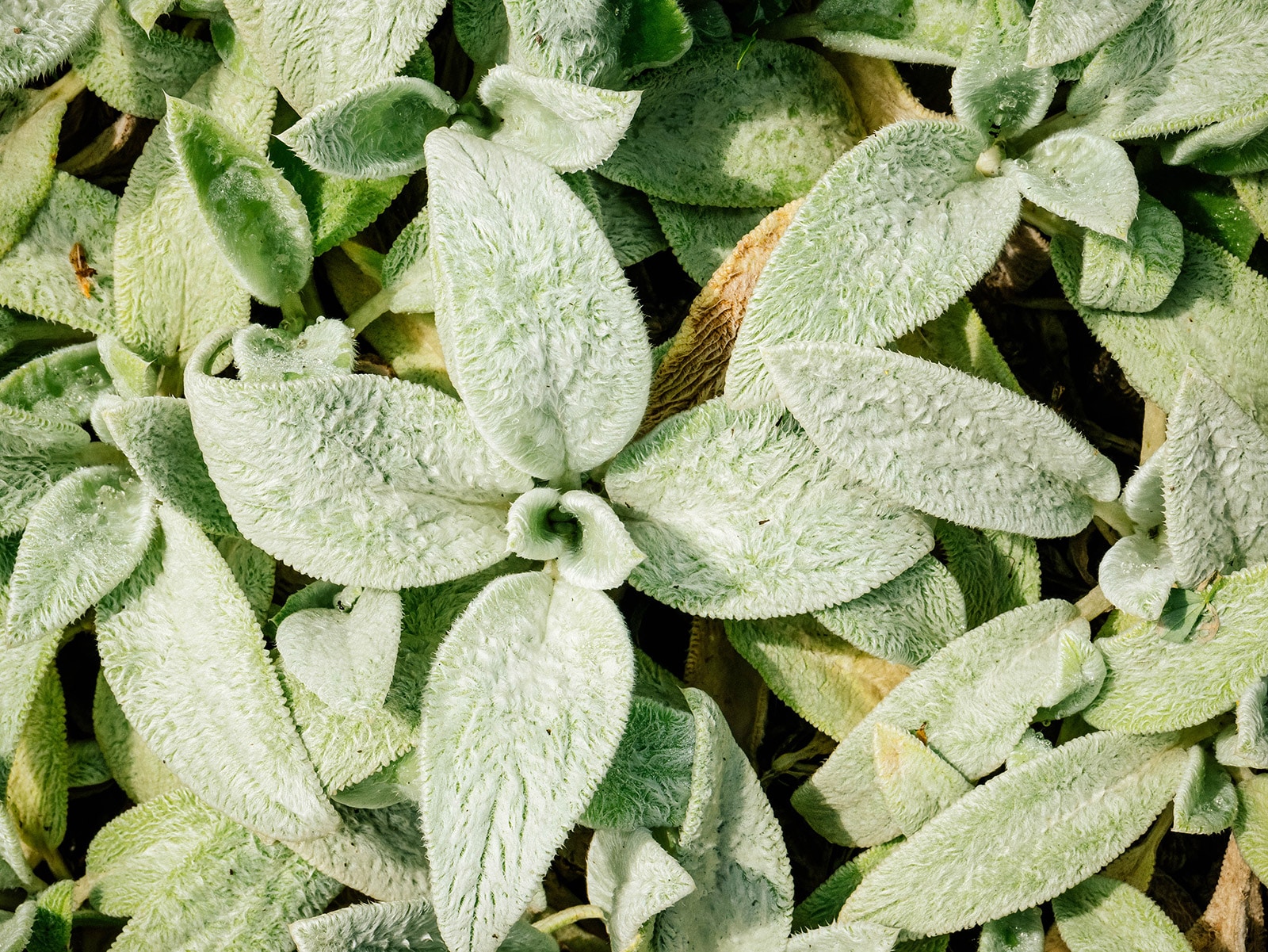
An excellent low-water grass alternative is silver carpet lamb’s ear (Stachys byzantina). Native to South Africa, it loves full sun and grows very low (up to 4 inches tall maximum).
This silver-leafed plant grows best in well-draining soil in a sunny garden. It needs only light watering until established and after that it’s very drought-tolerant, making it a great option for hot, dry climates.
Silver carpet can withstand moderate foot traffic and its neutral gray-green color lets your other landscaping plants stand out.
Here’s where you can buy Silver Carpet Lamb’s Ear.
Recommended for: Zones 9 through 11
Creeping jenny
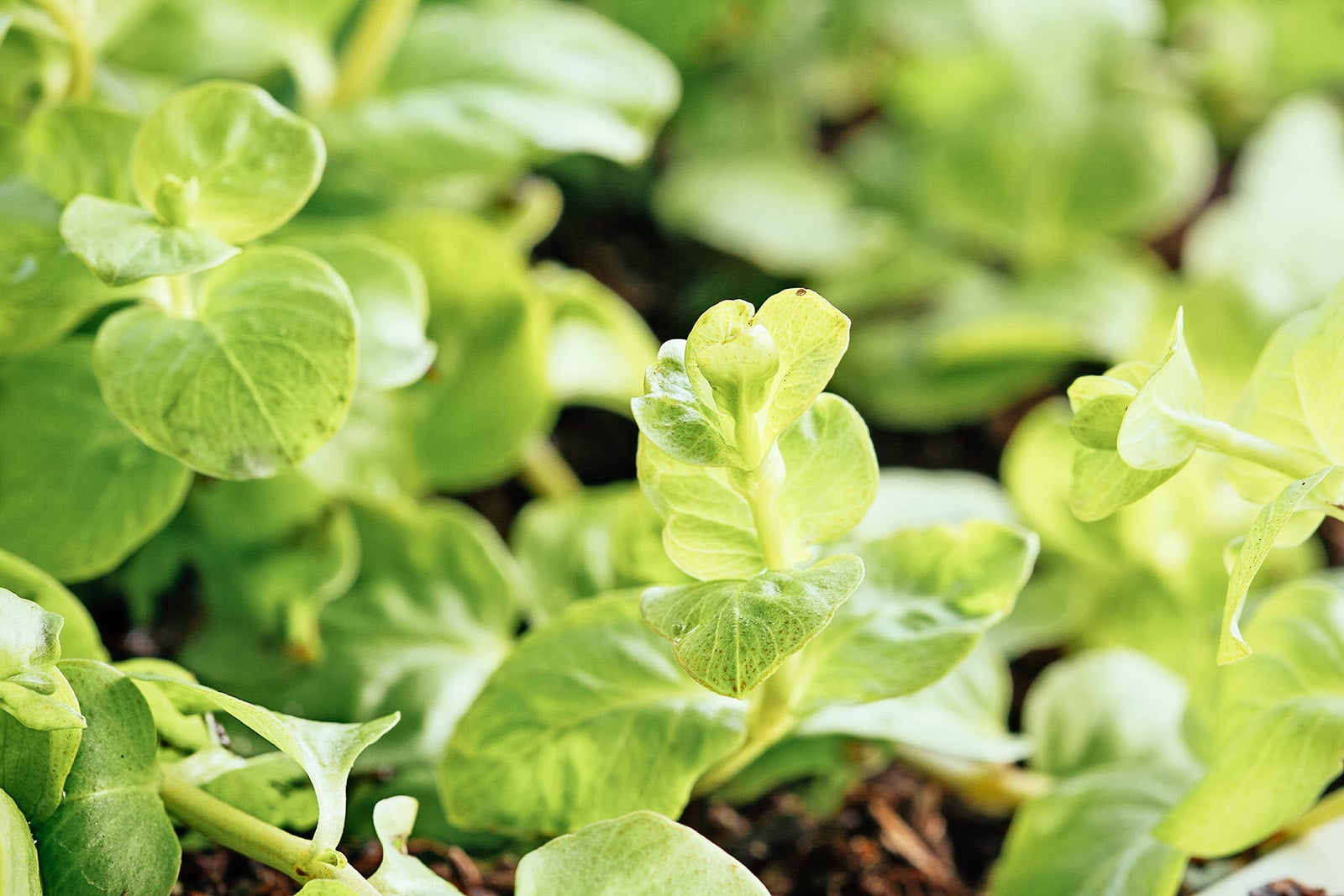
If you’re looking for a bold burst of color, creeping jenny plants (Lysimachia nummularia) produce gorgeous golden leaves! Often referred to as moneywort due to its golden coin appearance, creeping jenny appears to cover your yard in a beautiful yellow carpet.
It loves full sun and can tolerate light shade. Though this ground cover can thrive with very little maintenance, it does need to be lightly watered from time to time if there’s a drought.
I love this ground cover because during the spring months, it produces bright yellow blooms that attract pollinators. It can also take a lot of foot traffic, so it’s great for busy yards.
Here’s where you can buy Goldi Creeping Jenny.
Recommended for: Zones 3 through 8
Beach strawberry

Native to North America, beach strawberry (Fragaria chiloensis, aka coast strawberry or sand strawberry) creates a lovely evergreen carpet of green foliage.
This is another walkable ground cover that thrives in full sun to light shade and tolerates moderate foot traffic. It grows a little taller than some of the other plants on this list, sometimes reaching as tall as 6 inches.
It’s a beautiful plant year-round, but the bonus is that it’s also an everbearing strawberry type—that means in spring, it becomes dotted with pretty white flowers that give way to edible red berries in summer.
Here’s where to buy Beach Strawberry.
Recommended for: Zones 4 through 9
Wooly thyme and creeping thyme
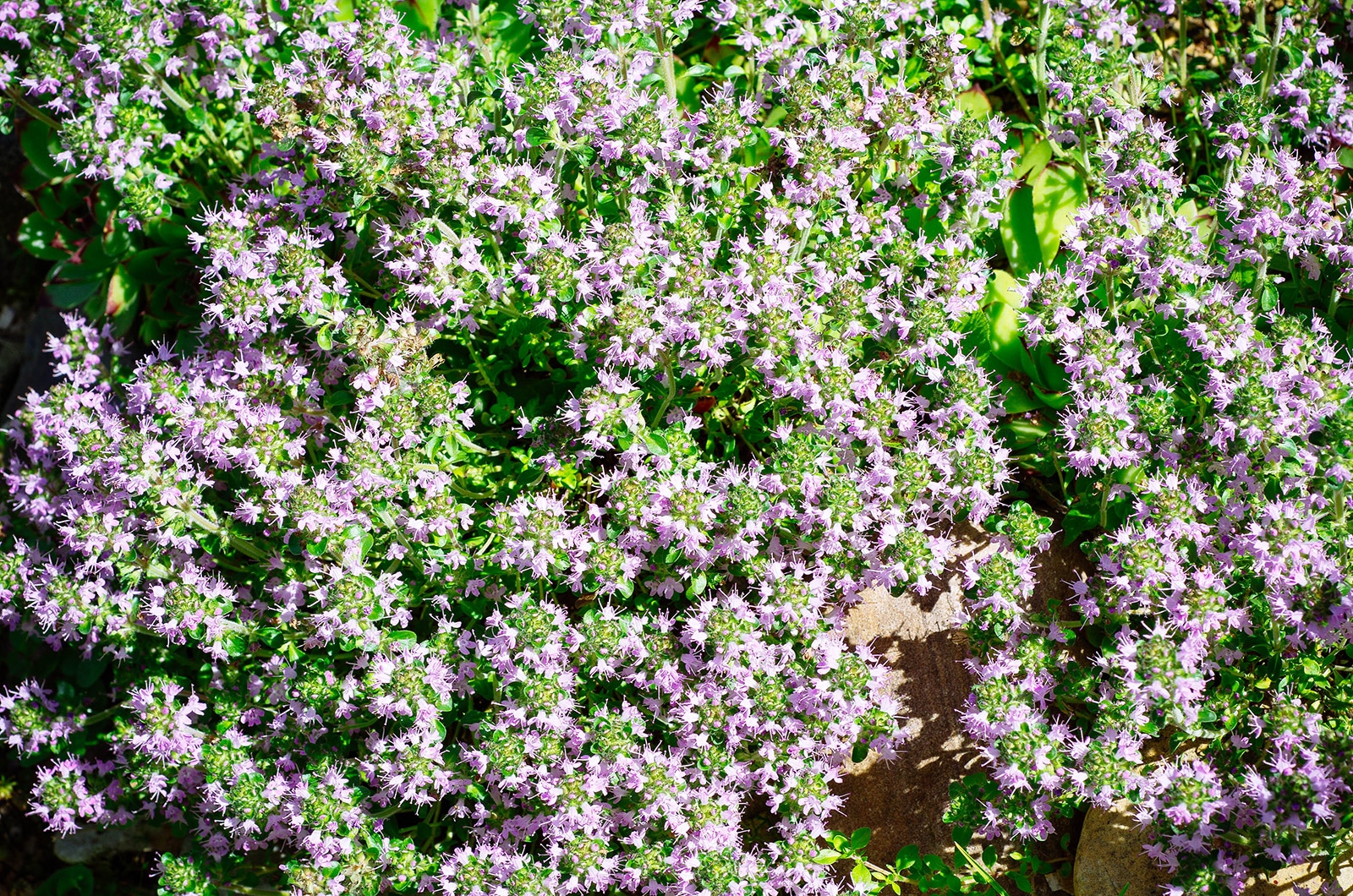
For a wonderfully fragrant yard, consider planting wooly thyme or creeping thyme (Thymus serpyllum). Both plants like direct sunlight and require very little care.
Wooly thyme has fuzzy leaves and stems and blooms beautiful pink flowers that bees absolutely love!
Creeping thyme produces stunning purple flowers in summer and gives off a delicious herbal scent, especially when walked on or brushed against.
Both of these varieties of thyme are known for their resilience as stepable ground covers, and the best part is, you can even use these tasty herbs in your cooking! (Obviously, only harvest the stems that do not get walked over.)
Here’s where you can buy Creeping Thyme.
Recommended for: Zones 5 through 9
Mazus
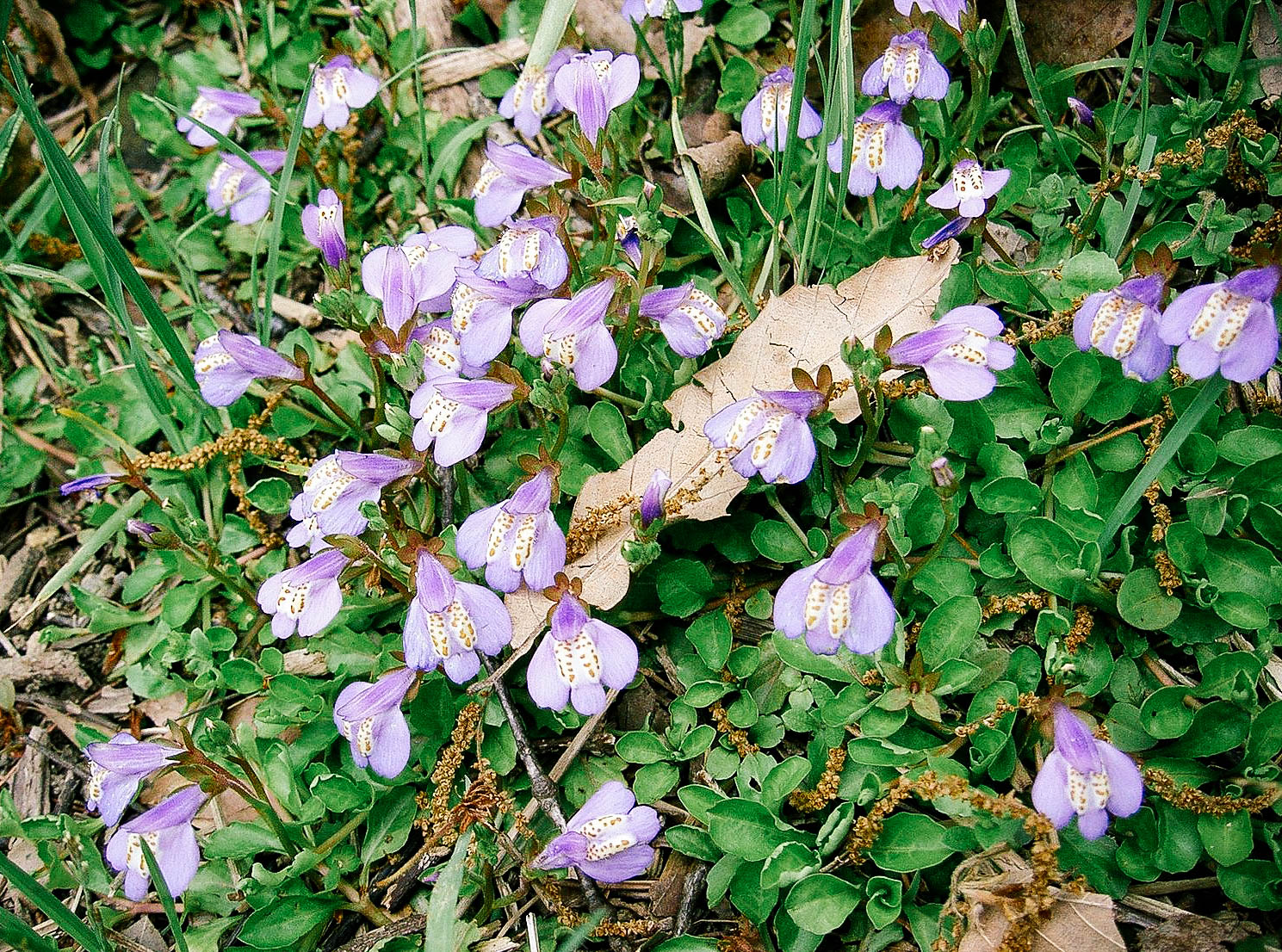
Mazus (Mazaceae, sometimes called creeping mazus) is a low-growing, fast-spreading ground cover, although it’s best suited for areas of the garden that see lighter foot traffic.
Once established, it spreads to create a bright green bedding that blooms beautiful lavender flowers in late spring and summer. Like most ground covers, mazus helps smother weeds too, making it a great alternative to grass.
It thrives in warmer climates, but is fairly versatile in that it can handle a wide variety of weather conditions.
Here’s where you can buy Creeping Mazus.
Recommended for: Zones 5 through 9
Snow-in-summer
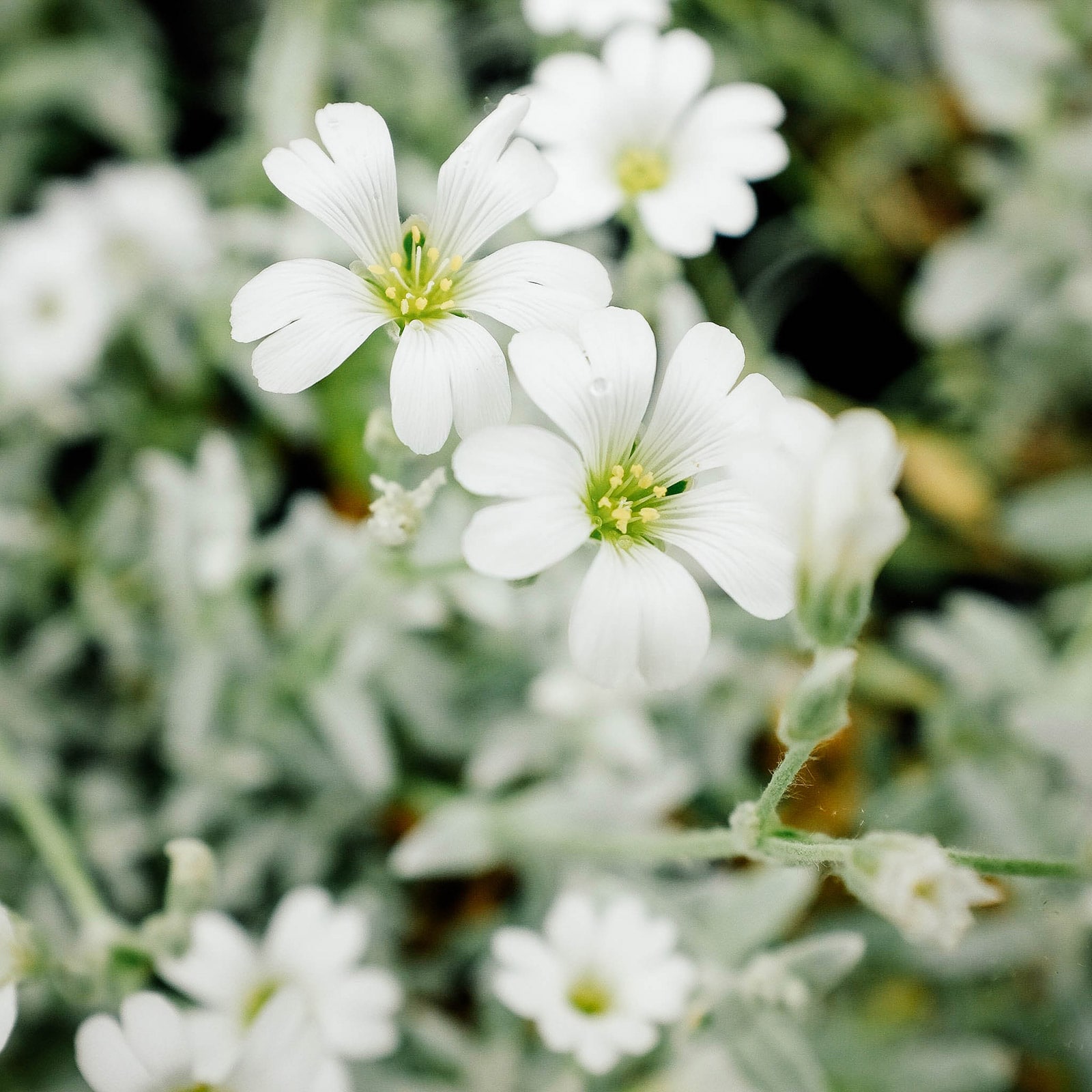
Indigenous to Western Asia and Europe, snow-in-summer ground covers (Cerastium tomentosum) prefer sun and grow best in well-drained soil.
This plant is very pretty and definitely lives up to its name. During the summer months it bursts in a profusion of dainty white flowers that look amazing against the silvery foliage.
Snow-in-summer spreads quickly to fill a space and even cascades over walls, making it a beautiful choice for borders.
It prefers cooler temperatures and is very cold-hardy, so it’s perfect for northern climates.
Here’s where you can buy Snow-in-Summer.
Recommended for: Zones 3 through 7
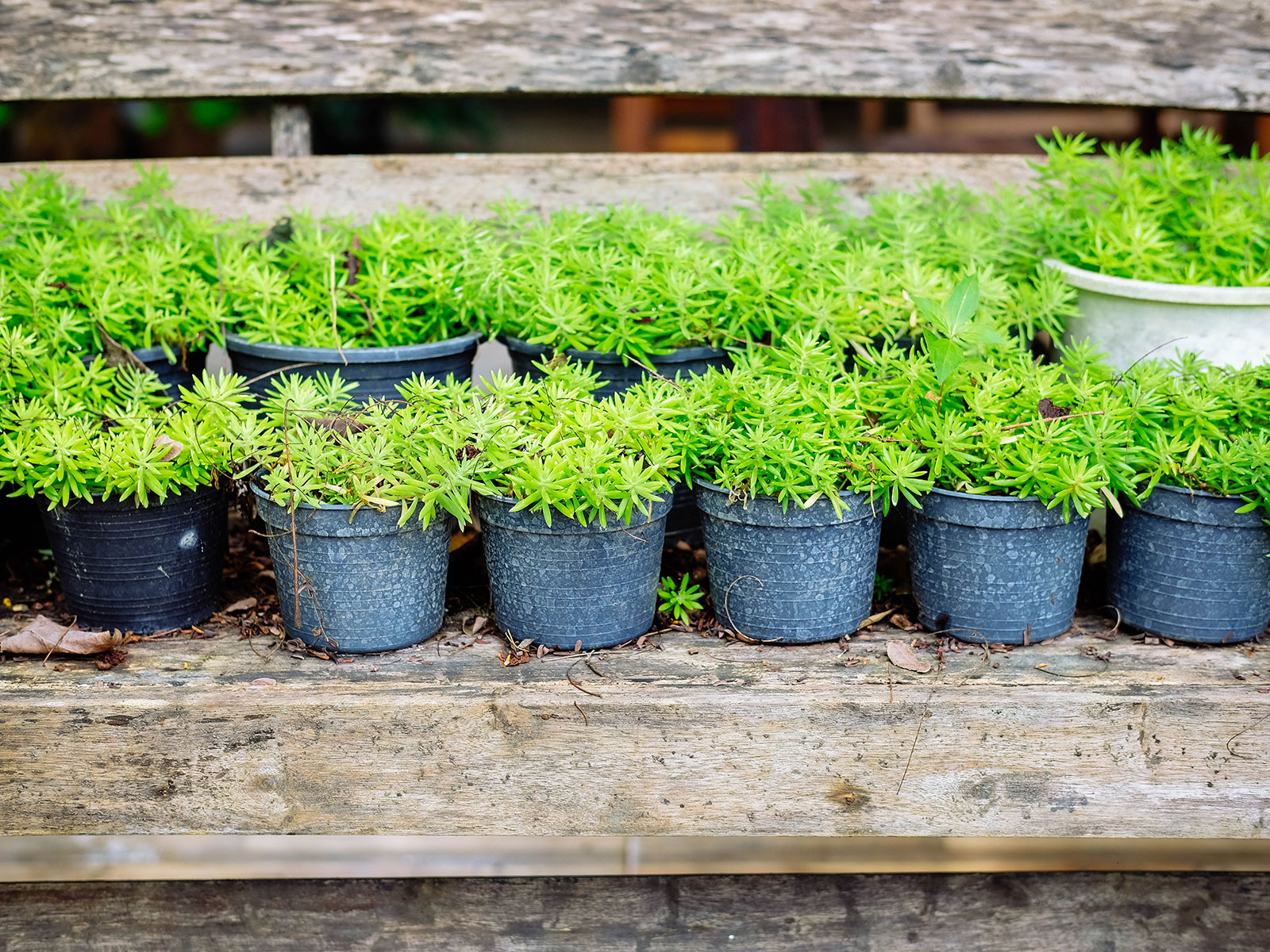
Tips for establishing walkable ground covers
Site conditions
Choosing the right ground covers for your yard will make a big difference in how well they grow and thrive.
Factors like sunlight, shade, temperature, soil type, and expected amount of foot traffic in your yard are all important things to consider. Keep in mind that some areas might get more traffic than others, so don’t be afraid to mix and match different types of ground covers that best suit your space.
Space requirements
When it comes to planting your ground covers, make sure you follow the recommendations that come with the plant.
Sometimes it’s tempting to plant ground covers closer than suggested to fill in an area quickly, but some varieties may spread like wildlife and take over your flower beds. You can always add more plantings as needed, but it’s much more time-consuming to prune or pull out excess growth.
Water, water, water (at first)
Even the most drought-tolerant ground cover needs a steady supply of moisture until the roots are established. Be sure you provide enough water after planting, especially for ground covers that need full sun.
When the plants are young, their roots are more shallow so they struggle to grow if the soil dries out quickly.
Leave them untouched until mature
When your ground covers are newly planted, they’re just as vulnerable to being stepped on as any other plant, so let them grow undisturbed for at least two to three weeks before walking over them.
Keep animals and kids away, and avoid using wheelbarrows or other equipment that could trample your ground covers while they’re trying to get established.
More posts you might find helpful:


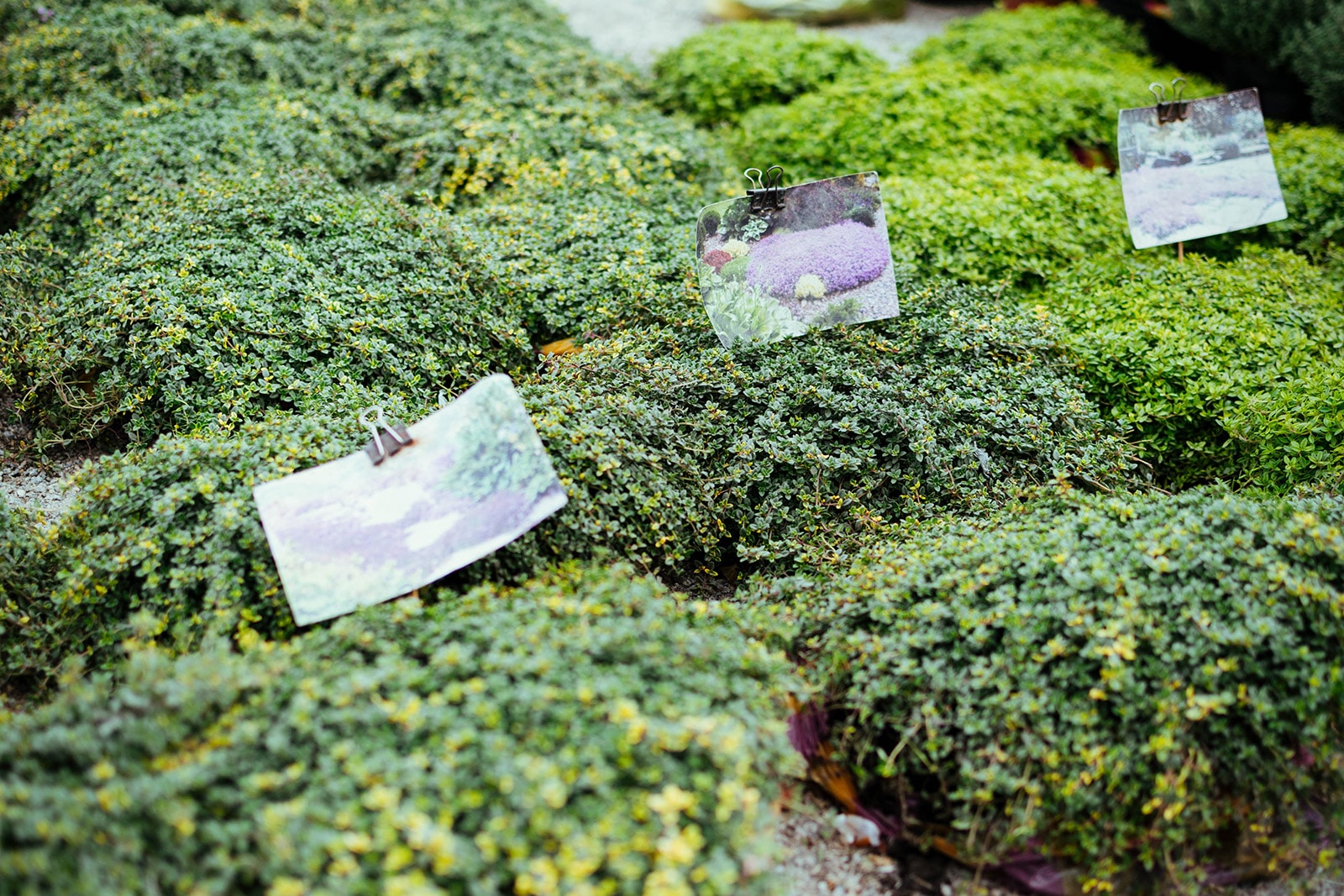













Our backyard is covered with bark and continuously dropping pine needles. I’m looking for a soft, drought resistant ground cover that can stand up against the pine needles and bark. What do you recommend please ? We are in Northen CA, Valley. Thank you!
Replacing Lawn grass with invasives is really not a good idea. I like that you had some from America, but the ones from other continents should not be planted and many States ban them. One really should not replace 1 non native (grass) with others.
Can you specify what will be good for letting other plants thrive with it? I have a lot of creeping Jenny and I’m worried it will stop other things from surviving…..:maybe better to plant things that are bigger already?? It does keep the weeds down but seems to keep other plant friends away as well that I want to grow.
Sorry, I just have to add my 2 cents. I have had Creeping Jenny in pots on the patio, and it has actually grown OUT of the pot, across the patio and under the siding on the house. I now rip out any streamers that seem to want to make a run for the border before they can get too far out of the pot. You could not pay me to put that plant in the ground. My neighbor has it in one sectioned off area of her yard, and it has become her life’s work to try and keep it from spreading all over the neighborhood (she won’t use chemicals).
We’re here in the Pacific NW, maybe it isn’t so hardy in other areas. Good luck! Mary
Hi Linda! What are your thoughts on clover when it comes to groundcovers for areas like garden paths? Thanks!
Clover is great! (And I really should add it to this list.) I prefer micro clover since it looks tidier than Dutch white clover, though it only tolerates light to moderate foot traffic.
Hi Linda!
I know someone that’s currently considering clover as ground cover between their raised beds! 😀 Some of these other plants sound like they might work, as well. Thank you!